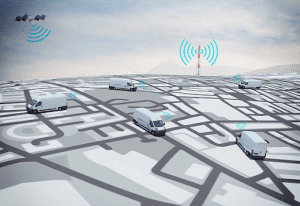
For good reasons, fleet telematics solutions have changed how businesses manage their fleets. With real-time data on vehicle location, fuel usage, driver behavior, and more, fleet managers can make informed decisions that can improve the safety, efficiency, and profitability of their fleet.
“How do I find the right fleet telematics solutions with so many of them on the market?” This article discusses the many fleet telematics solutions available and how to pick one.
Types of fleet telematics solution
Among the most popular fleet telematics solutions are the
- Black box telematics: The black box telematics solution features a small device that is installed in a vehicle to measure overall performance and driver behavior. Once it’s installed, it collects and transmits data (acceleration, braking, speed, et cetera) to a central server where it is analyzed. This analysis will help stakeholders make decisions.
- Smartphone-powered telematics: one of the biggest inventions of technology is the smartphone, and it is a good telematics device. With smartphone-powered telematics, you do not have to pay for expensive installation costs.
All that has to be done is to install a mobile app that will use the phone’s GPS to collect data about the vehicle’s performance. This data is further transmitted to stakeholders, who make decisions based on it.
- Bluetooth-powered telematics: This solution uses a Bluetooth device to get data on vehicle performance. It is plugged into the vehicle’s OBD port, and it uses Bluetooth to collect data which is shared with the central server. Sometimes certain issues might occur with the Bluetooth, but overall, it’s a relevant way for information to be sent.
- OBD telematics: OBD (On-Board Diagnostics) uses the OBD port found in a vehicle to transmit real-time information about the vehicle’s performance. A device is plugged into the OBD port of the vehicle and can be used to get information like speed, fuel consumption, miles driven etc.
- OEM telematics: known as original equipment manufacturer, this telematics solution is built into vehicles by the manufacturers. With this, you do not have to worry about getting aftermarket solutions, as OEMs are more advanced and integrated than them.
Tips to choose the right fleet telematics solution
In order to get the telematics solution that fits your business needs, there are certain things you should do, which include:
- Identify the business’s needs.
When choosing a telematics solution, it is important to start with why. Why do you need a fleet telematics solution? What problems do you want to solve? Do you want to reduce maintenance costs, reduce fuel usage, identify driver behaviors, or increase fleet safety? When you know the problem you need to solve, it becomes easier to choose a telematics solution that can meet those needs.
- Consider GPS tracking:
One of the most important things in fleet management is tracking the real-time location of vehicles. The fleet telematics solution you choose should be able to provide real-time vehicle data. Data like this can help drivers avoid traffic and get alternate routes to use and know.
- Safety:& security
Whatever fleet telematics solution you choose should increase the safety of your fleet. It should be able to provide alerts and alarms for dangerous driver behaviors and theft. It should also be able to give incident analysis to help you know the causes of accidents and how to best avoid them.
Fleet telematics solutions involve sensitive data about your vehicles, drivers, and customers. It’s essential to choose a solution that offers data security and privacy. Look for solutions that offer encryption, multi-factor authentication, and regular security updates.
- Increased efficiency:
One of the main reasons people look to fleet management and telematics is to increase the efficiency of operations. With a fleet management solution, you should be able to note:
- idle time of drivers
- Unauthorized usage
- Fuel consumption and route optimization
- Vehicle diagnostic and maintenance alerts.
- Ease of usage
Another thing to consider when making your choice is the user experience. Is it easy to use? Can your team operate it without waiting for external help? Does it have a modern and easy interface?
- Consider compatibility:
If you already have a fleet management system in place, make sure the telematics solution is compatible with your existing system. Look for solutions that offer open APIs or integrations with common fleet management systems.
- Check for customer support:
A good telematics solution should offer reliable customer support. Look for solutions that offer 24/7 customer support, including phone, email, and chat support. You should also look for solutions that offer training and onboarding to help you get started.
Choosing the right fleet telematics solution for your business can change its trajectory and even help you reach your goals faster. There are a lot of fleet telematics solutions out there; you just have to do your research, ask questions, and keep shopping till you find the one that fits your needs.

